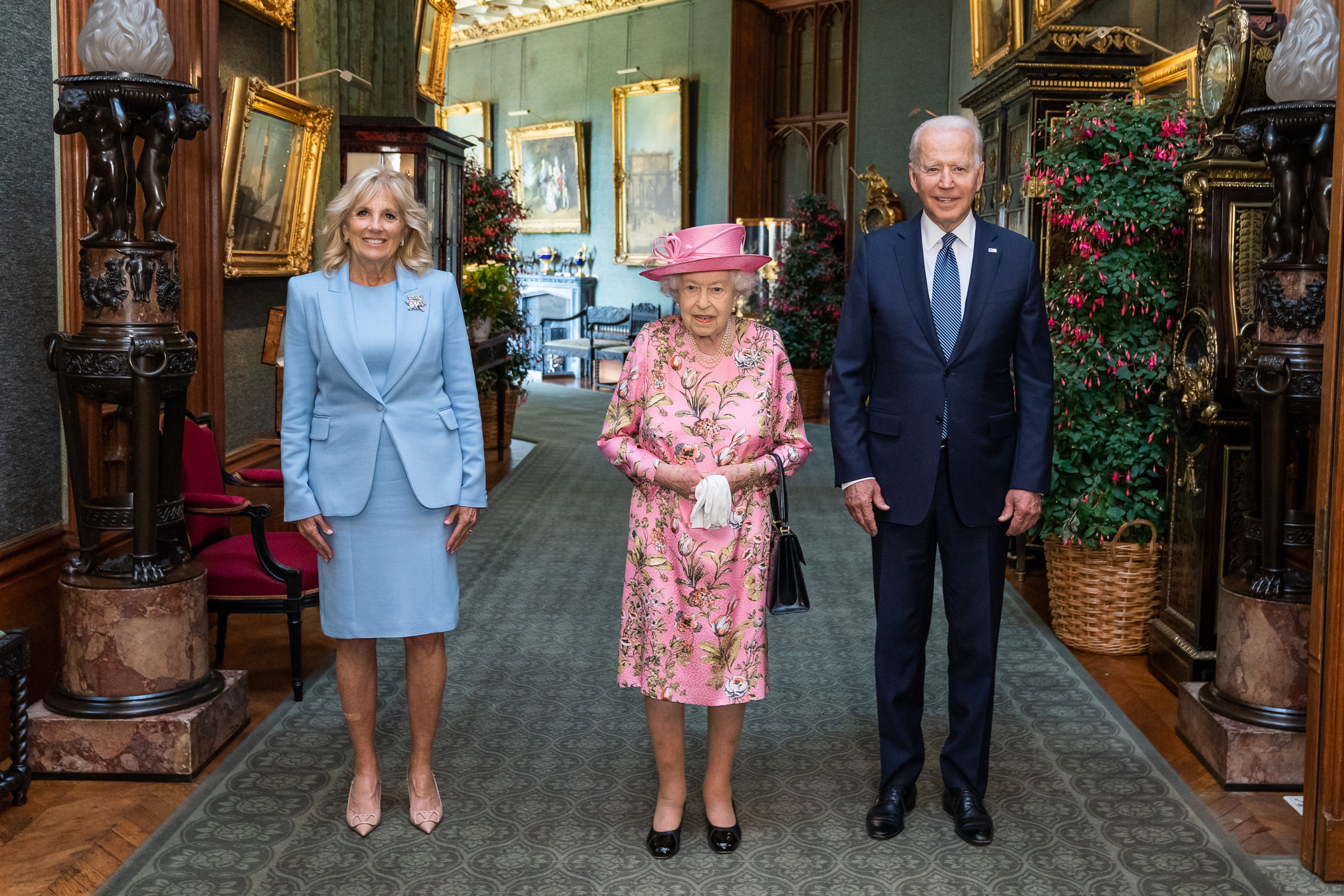Though the gardens and state rooms at Windsor Castle are open to the public throughout the year, there are entire sections of the estate never seen by the public, one such area is The Queen’s private apartment at Windsor Castle. This post takes a look at the various peeks of the space given to the public over the years:

Located in Windsor Castle’s Upper Ward, The Queen’s private apartment sits in one of the castle’s newest sections, built in the 19th century. The apartment features a suite of rooms running along the south-end of the complex including bedrooms, multiple drawing rooms, dressing rooms, bathrooms, a ‘king’s ante-room’, two audience rooms, a writing room, wardrobe, ‘library, great drawing room, dining room, beaufette room and orchestra’, and reception rooms, amongst others.

The private apartments at Windsor Castle are closely guarded and rarely seen by the public, until a head of state pays a visit to her majesty and official pictures are released of the occasion. Most often, these pictures take place in The Queen’s sitting room; a ‘cosy’ semi-octagonal room known as The Oak Room. The room is so called on account of its oak wood panelled walls. The elegant mill work gives the wood panels a neo-gothic arched design – a motif found throughout the castle, including in the room’s windows. The panels in this room have been painted white since their late 1820’s installation, making the room markedly different from the only other public photos of the room, taken over 200 years prior.

The black and white image above shows the room between 1897 and 1899, when it was used by Queen Victoria as one of her private dining rooms, and known as ‘the Gothic Breakfast Room’. The 19th-century photo shows the original panelling and the height of the ceiling, which includes its own ornate detailing. There is far fewer items of furniture and accoutrements than today, making the room seem larger, with a focus on antiques and priceless works of art. ‘Over the mantelpiece hangs a portrait of the Queen; on the left-hand wall are two tapestries representing the “Hunting of the Calydonian Boa ” and the ” Death of Meleager.” They were executed at the Gobelins works, and presented to the Queen by King Louis Philippe when her Majesty, accompanied by the Prince Consort, first visited France’ according to the royal collection trust.
Below, we see the room today, used by Queen Elizabeth II as a comfy sitting room featuring sofas, arm chairs, personal mementos, photographs and the general bric-a-brac accumulated in any private space. The large candelabra that hangs from the ceiling in the 1890s is gone, the tapestry has been swapped for a bucolic oil painting and the Queen’s portrait has made way for a pair of gilt mirrors, one on either side of the room hanging over the two stone fireplaces.
Until 2018, little else from the private apartments had been seen by the public, but a visit from President Trump provided an opportunity to finally see some more of the space. A photograph of the monarch with the president and the first lady was released to the public, showing the trio stood in an opulent hallway. The space is known as The Grand Corridor, or the Long Gallery, and is the main hallway just outside The Queen’s private apartment.

The 500ft-long halls are so large they’re able to fit a seemingly unending stream of furnishings. According to the Royal Collection Trust, whose collection includes a wealth of historic archival photographs of the space from Victoria’s reign, the busts that appear throughout the corridors were ‘chosen to commemorate British monarchs, historical personages, friends and contemporaries. The paintings included a magnificent group of Venetian views by Canaletto, Zuccarelli and the Riccis, purchased from Consul Smith by George III; some of Frederick, Prince of Wales’s hunting pictures by Wootton; and a selection of late eighteenth- and early nineteenth-century portraits.’ Much of the gallery’s objects have remained in place since George IV’s reign.
Three years after Trump’s visit, the newly elected President Biden and first lady Jill visited the monarch at the castle too, releasing a photo in the exact same place, this time providing a slightly clearer look of the area. Since the 2018 photo several tall houseplants, which look like bleeding hearts flowers, and vases of wild flowers have been added.
As well as storied antiques and artworks, there can also be seen a dog bowl, sitting in the right hand corner of the image, seen most clearly in the Trump portrait, for Her Majesty’s numerous dogs that regularly follow her around the castle.

Though theses are the only two spaces seen in publicly released photographs in recent years, there are known to be a wealth of rooms hidden behind the castle walls, forming The Queen’s private apartment. Other rooms include a range of sitting rooms, ante rooms and dining rooms including this informal dining room captured between 1897 and 1899 during Queen Victoria’s reign:

Other rooms in the apartment include The King’s Writing Room, The King’s Audience Chamber (also known as The Duke of Edinburgh’s Audience Chamber), The Audience Room, The Royal Closet, The Queen’s Boudoir, The Queen’s Bedroom and The Queen’s Dressing Room. See more archival images of the private apartments on rct.uk, or read more about the castle’s architectural history, including the building of the wing that houses the apartments on British History‘s archival page here.
See more royal residences by browsing the ‘royalty‘ tag, including inside tours of Clarence House and Buckingham Palace, or a look at the many other homes in Windsor in this post.
feature image: FrDr, CC BY-SA 4.0 via Wikimedia Commons

